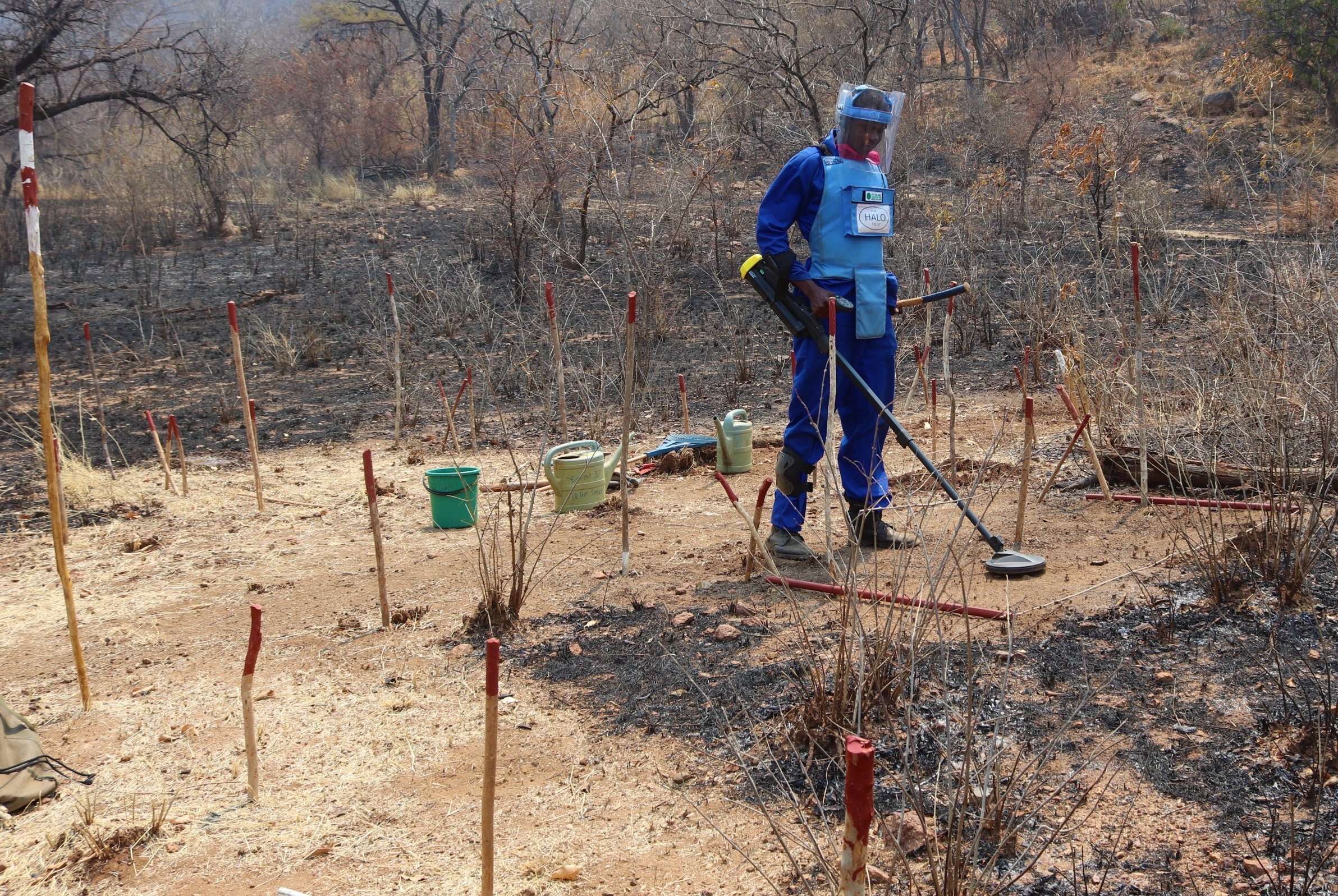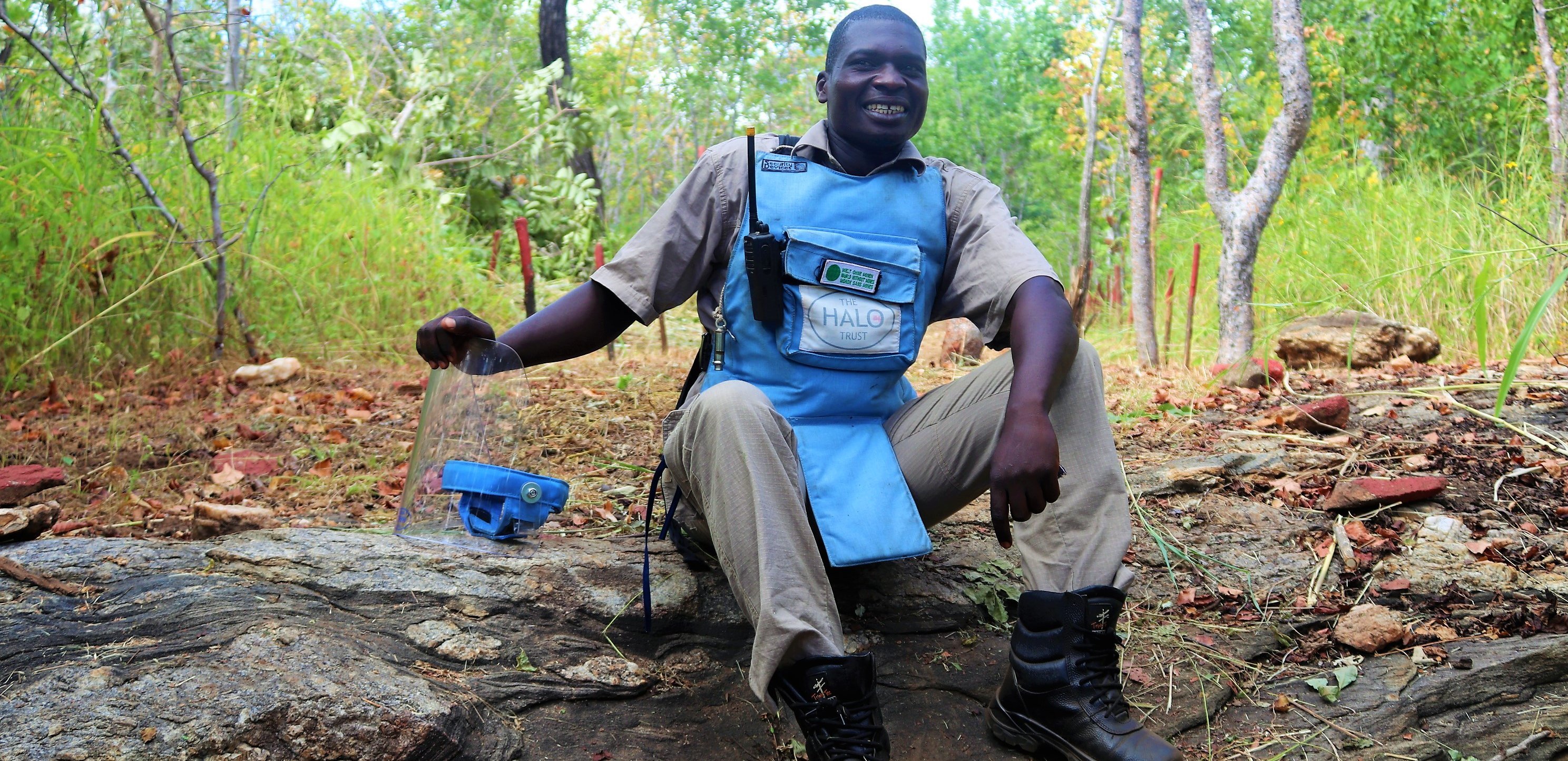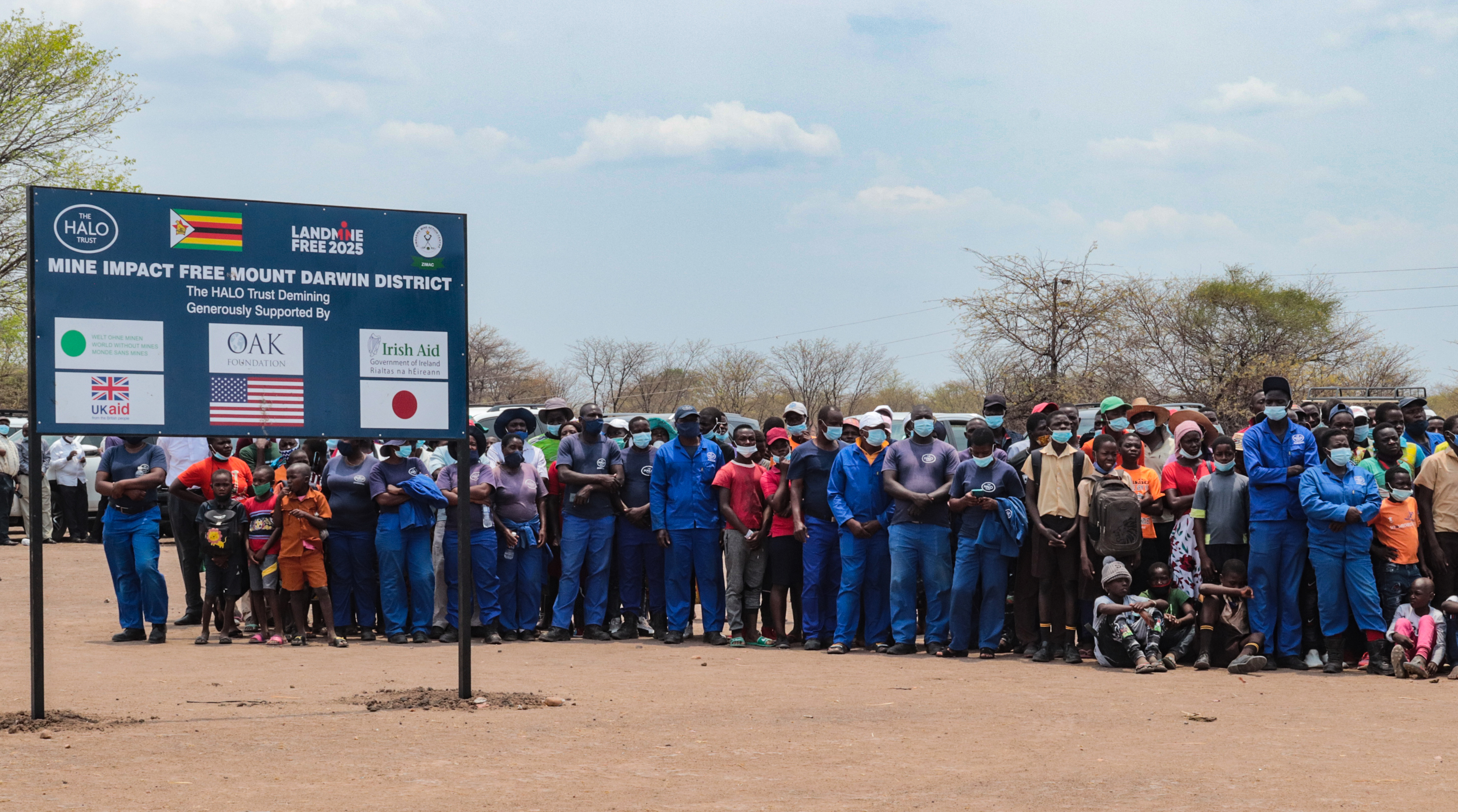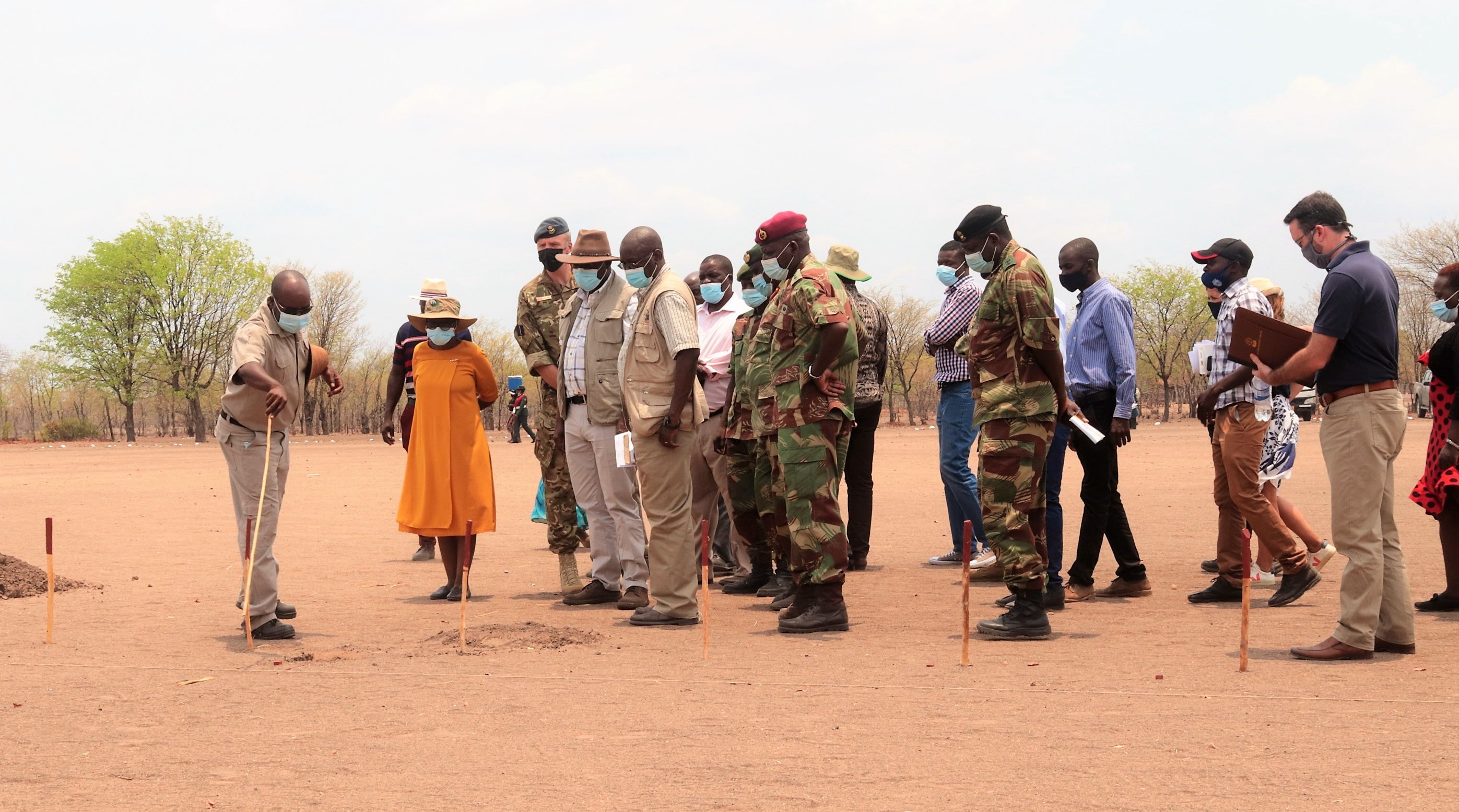ZIMBABWE
Risk education and mine clearance | Project duration: since 2015
The war of independence that raged during the 1970s still shapes the lives of the people living on the border to Mozambique. One of the densest mine belts in the world is located here. 5 500 mines were laid along a length of 425 kilometres – often directly adjacent to family homes, schools, hospitals and in the middle of farmland. The mine belt denies both humans and animals access to land and water and impedes trade and border traffic. Mine accidents involving cattle regularly bring farming families to the brink of destitution.
The project
WWM began cooperating with HALO Trust to clear mines and sensitise civilians living near Zimbabwe's north-eastern border in 2015.

The white sticks show where mines were found and destroyed.
Case Story: I have one of the most rewarding jobs in the world!
Jackson Mabhandi is one of our group leaders in Zimbabwe. His path there, however, was very difficult.
As a child, he lost his beloved sister in a mine accident and shortly afterwards his mother died. He then grew up with his grandparents. His grandparents barely made ends meet as they took care of nine other children. In his third year at high school, Jackson had to drop out and help provide for the family. He worked various informal jobs until HALO started cleaning up their area.
The job as a deminer was, as Jackson called it, a "game changer". His life changed immediately. Not only was Jackson able to provide a better life for his family than he had been living, but he was also able to contribute to the safety of his community, something he was passionate about.
"I came face to face with the very same device that had taken my sister from me. I would stop at nothing to make sure that no more lives would be lost. I have one of the most rewarding jobs in the world!" says Jackson Mabhandi today.

What we achieved
The mine-clearing operation financed by WWM and the safety resulting from it brought great joy to the Chavhunga family's village. But not only there. Farmland released for use is urgently needed in many areas to ensure that the crops are sufficient to survive in years of drought. Trade has increased thanks to safe border crossings with Mozambique; external traders also feel confident about returning to the villages in the former mine belt.
Locals can work as deminers in WWM projects. They use the money they earn to pay for their children's education, more cattle, a new roof or a solar panel – thus investing in a better future.
Results 2022
2'687 anti-personnel mines were identified and eliminated.
440'073 square meters of land could be released for safe use.
322 residents have been given secure access to land and infrastructure.
987 people, 862 of whom were children, were made aware of landmine hazards and learned safe behaviour.
First mine-free district in 45 years
On the 12th of November 2021, Zimbabwe took a major step on the road to finally removing the last remains of its war of independence when the first entire district on its mined border with Mozambique was declared mine-impact free and handed back to the local community.
This declaration marks a significant milestone in Zimbabwe’s national effort to achieve a “Landmine-Free Zimbabwe by 2025”. Mount Darwin is the first such district to reach this status, with 11 districts still containing landmine contamination. It is World Without Mines' fervent hope and belief that in the coming years more and more districts will reach the same status, and our efforts are dedicated to reaching this goal.


Pictures: The HALO Trust
